Embracing Japanese Tradition: The Story of Nanakusa Gayu (Seven Herb Rice Porridge)
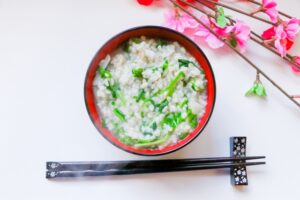
If you’re visiting Japan in January, you might come across a unique culinary tradition known as Nanakusa Gayu (七草粥), or Seven Herb Rice Porridge. This simple yet meaningful dish is a staple of Japanese New Year celebrations and is enjoyed on January 7th. Let’s dive into the history, ingredients, and cultural significance of this comforting meal!
What is Nanakusa Gayu?
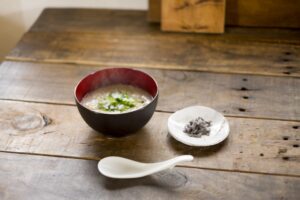
Nanakusa Gayu is a rice porridge made with seven specific herbs. It is traditionally eaten on January 7th, a day called “Jinjitsu” (人日), or “Day of the People,” as part of the New Year festivities. This custom is thought to bring good health and longevity for the year ahead. The soothing and light dish also helps cleanse the body after the indulgent feasts of the New Year period.
The Seven Herbs of Spring
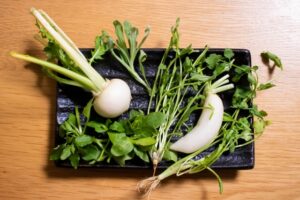
The “seven herbs” used in Nanakusa Gayu are believed to have healing properties and represent early signs of spring. Here are the herbs:
Seri (せり) – Japanese parsley
Nazuna (なずな) – Shepherd’s purse
Gogyo (ごぎょう) – Cudweed
Hakobera (はこべら) – Chickweed
Hotokenoza (ほとけのざ) – Henbit
Suzuna (すずな) – Turnip greens
Suzushiro (すずしろ) – Daikon radish greens
These ingredients may vary slightly depending on regional availability, but the tradition of using fresh greens remains consistent.
The Origins of Nanakusa Gayu
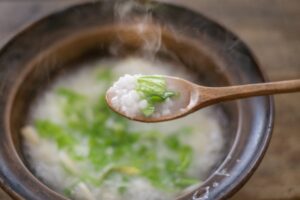
The practice of eating Nanakusa Gayu dates back to Japan’s Heian period (794–1185) and is influenced by Chinese customs. It’s rooted in the belief that consuming fresh herbs in early spring promotes health and wards off evil spirits. Over centuries, the tradition evolved into a New Year’s custom celebrated by households across Japan.
How is Nanakusa Gayu Made?
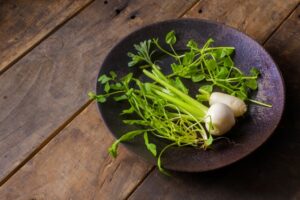
Making Nanakusa Gayu is surprisingly simple. Here’s a quick overview:
Prepare the Rice Porridge: Cook plain rice in plenty of water until it becomes soft and porridge-like.
Chop the Herbs: Lightly blanch the seven herbs and chop them finely.
Combine: Stir the chopped herbs into the warm rice porridge, seasoning with a pinch of salt.
The result is a fragrant, wholesome dish that highlights the natural flavors of the herbs.
Where to Try Nanakusa Gayu
While Nanakusa Gayu is traditionally made at home, some restaurants and hotels in Japan offer it as part of their seasonal menus around January 7th. For a truly authentic experience, consider staying at a Japanese ryokan (inn) or visiting a local family-run eatery.
Experience the Culture
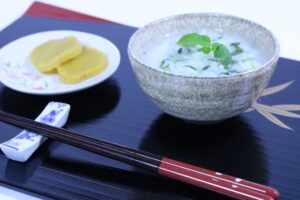
Participating in seasonal customs like eating Nanakusa Gayu is a wonderful way to connect with Japanese culture. It’s not just about the food—it’s about embracing traditions that have been passed down for centuries.
If you’re in Japan in early January, why not give Nanakusa Gayu a try? You’ll not only enjoy a comforting meal but also take part in a centuries-old tradition that celebrates health, renewal, and the coming of spring.
Have you tried Nanakusa Gayu before? Share your experience or let us know if you have any questions about this delightful Japanese custom!
